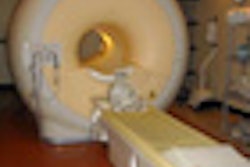Dear AuntMinnie Member,
More than 30 patients so far have tested positive for hepatitis C in New Hampshire, where a former radiologic technologist (RT) at Exeter Hospital has been arrested and charged with allegedly infecting the patients as part of a drug diversion scheme. Many are now asking whether the infections could have been prevented.
The technologist, David Kwiatkowski, had been terminated from at least two assignments as he worked around the U.S. as a traveling RT before he was assigned to Exeter Hospital. At one job he was fired after allegedly being found in a hospital bathroom, unconscious and surrounded by drug paraphernalia.
The Kwiatkowski case has exposed flaws in the system by which allied health workers are credentialed and licensed in the U.S., with many hospitals reluctant to report personnel incidents that could signal underlying problems in employees. And the bodies charged with credentialing healthcare personnel lack the subpoena power to fully investigate suspicious incidents.
The Kwiatkowski case is especially disturbing because it's the second time in as many years that a technologist has been charged with infecting patients with hepatitis C through drug diversion. Whether the cases draw increased regulatory scrutiny remains to be seen. Read more by clicking here, or visit our Imaging Leaders Digital Community at leaders.auntminnie.com.
Reducing unnecessary CCTA use
In other news, researchers from Michigan were able to reduce inappropriate utilization of coronary CT angiography (CCTA) exams through a carrot-and-stick approach, according to an article we're featuring in our CT Digital Community.
The carrot in this case was an educational effort that focused on referring physicians, advising them of appropriate utilization of CCTA based on guidelines issued by multiple medical societies, with free continuing medical education thrown in to sweeten the pot. The stick was a warning that failure to reduce inappropriate utilization could result in a loss of reimbursement from third-party payors.
How well did the initiative work? Find out by clicking here, or visit our CT Digital Community at ct.auntminnie.com.
In other news in the community, learn about a recent study in which South Korean researchers used computer-aided detection (CAD) software to reduce reader variability in low-dose CT lung screening exams. They believe that CAD could make it easier to implement CT screening programs, according to an article you can find by clicking here.



















